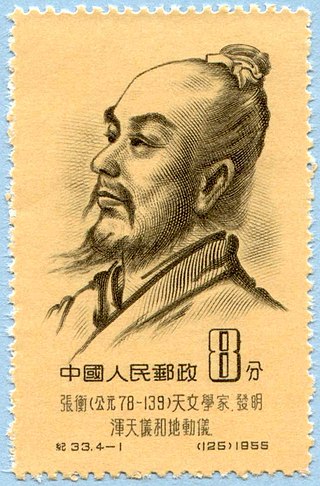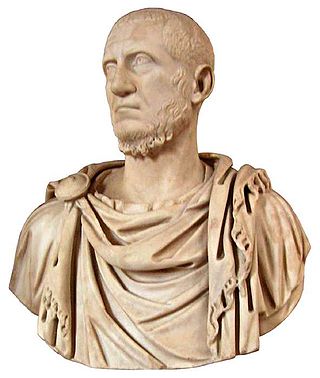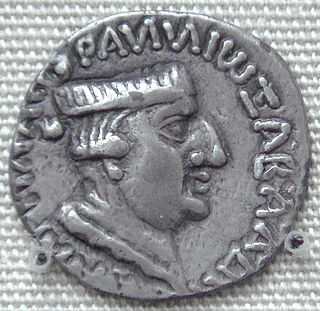
The 110s was a decade that ran from January 1, AD 110, to December 31, AD 119.

The 120s was a decade that ran from January 1, AD 120, to December 31, AD 129.

Year 125 (CXXV) was a common year starting on Sunday of the Julian calendar. At the time, it was known as the Year of the Consulship of Paullinus and Titius. The denomination 125 for this year has been used since the early medieval period, when the Anno Domini calendar era became the prevalent method in Europe for naming years.
AD 56 (LVI) was a leap year starting on Thursday of the Julian calendar. At the time, it was known in the Roman Empire as the Year of the Consulship of Saturninus and Scipio. The denomination AD 56 for this year has been used since the early medieval period, when the Anno Domini calendar era became the prevalent method in Europe for naming years.
AD 76 (LXXVI) was a leap year starting on Monday of the Julian calendar. At the time, it was known as the Year of the Consulship of Titus and Vespasianus. The denomination AD 76 for this year has been used since the early medieval period, when the Anno Domini calendar era became the prevalent method in Europe for naming years.

The 130s was a decade that ran from January 1, 130, to December 31, 139.
Year 115 (CXV) was a common year starting on Monday of the Julian calendar. In the Roman Empire, it was known as the Year of the Consulship of Messalla and Vergilianus. The denomination 115 for this year has been used since the early medieval period, when the Anno Domini calendar era became the prevalent method in Europe for naming years.
Year 119 (CXIX) was a common year starting on Saturday of the Julian calendar. At the time, it was known as the Year of the Consulship of Hadrianus and Rusticus. The denomination 119 for this year has been used since the early medieval period, when the Anno Domini calendar era became the prevalent method in Europe for naming years.
Year 120 (CXX) was a leap year starting on Sunday of the Julian calendar. At the time, it was known as the Year of the Consulship of Severus and Fulvus. The denomination 120 for this year has been used since the early medieval period, when the Anno Domini calendar era became the prevalent method in Europe for naming years.
Year 130 (CXXX) was a common year starting on Saturday of the Julian calendar. At the time, it was known as the Year of the Consulship of Catullinus and Aper. The denomination 130 for this year has been used since the early medieval period, when the Anno Domini calendar era became the prevalent method in Europe for naming years.

Year 458 (CDLVIII) was a common year starting on Wednesday of the Julian calendar. At the time, it was known as the Year of the Consulship of Maiorianus and Leo. The denomination 458 for this year has been used since the early medieval period, when the Anno Domini calendar era became the prevalent method in Europe for naming years.

Year 257 (CCLVII) was a common year starting on Thursday of the Julian calendar. At the time, it was known as the Year of the Consulship of Valerianus and Gallienus. The denomination 257 for this year has been used since the early medieval period, when the Anno Domini calendar era became the prevalent method in Europe for naming years.
Year 170 (CLXX) was a common year starting on Sunday of the Julian calendar. At the time, it was known as the Year of the Consulship of Clarus and Cornelius. The denomination 170 for this year has been used since the early medieval period, when the Anno Domini calendar era became the prevalent method in Europe for naming years.

Year 275 (CCLXXV) was a common year starting on Friday of the Julian calendar. At the time, it was known as the Year of the Consulship of Aurelianus and Marcellinus. The denomination 275 for this year has been used since the early medieval period, when the Anno Domini calendar era became the prevalent method in Europe for naming years.

Year 180 (CLXXX) was a leap year starting on Friday of the Julian calendar. At the time, it was known as the Year of the Consulship of Rusticus and Condianus. The denomination 180 for this year has been used since the early medieval period, when the Anno Domini calendar era became the prevalent method in Europe for naming years.

Year 437 (CDXXXVII) was a common year starting on Friday of the Julian calendar. At the time, it was known as the Year of the Consulship of Aetius and Sigisvultus. The denomination 437 for this year has been used since the early medieval period, when the Anno Domini calendar era became the prevalent method in Europe for naming years.
Year 35 BC was either a common year starting on Thursday or Friday or a leap year starting on Wednesday, Thursday or Friday of the Julian calendar and a common year starting on Thursday of the Proleptic Julian calendar. At the time, it was known as the Year of the Consulship of Cornificius and Sextus. The denomination 35 BC for this year has been used since the early medieval period, when the Anno Domini calendar era became the prevalent method in Europe for naming years.

The Shaka era is a historical Hindu calendar era, the epoch of which corresponds to Julian year 78.
The Western Satraps, or Western Kshatrapas were Indo-Scythian (Saka) rulers of the western and central parts of India, between 35 and 415 CE. The Western Satraps were contemporaneous with the Kushans who ruled the northern part of the Indian subcontinent, and were possibly vassals of the Kushans. They were also contemporaneous with the Satavahana (Andhra) who ruled in Central India. They are called "Western Satraps" in modern historiography in order to differentiate them from the "Northern Satraps", who ruled in Punjab and Mathura until the 2nd century CE.

Nahapana, was an important ruler of the Western Kshatrapas, descendant of the Indo-Scythians, in northwestern India, who ruled during the 1st or 2nd century CE. According to one of his coins, he was the son of Bhumaka.










